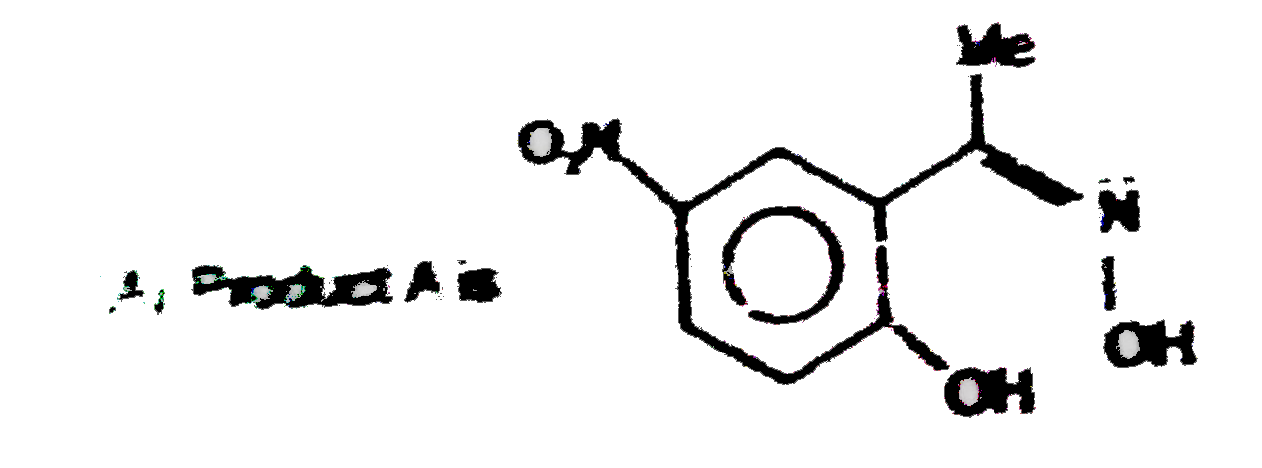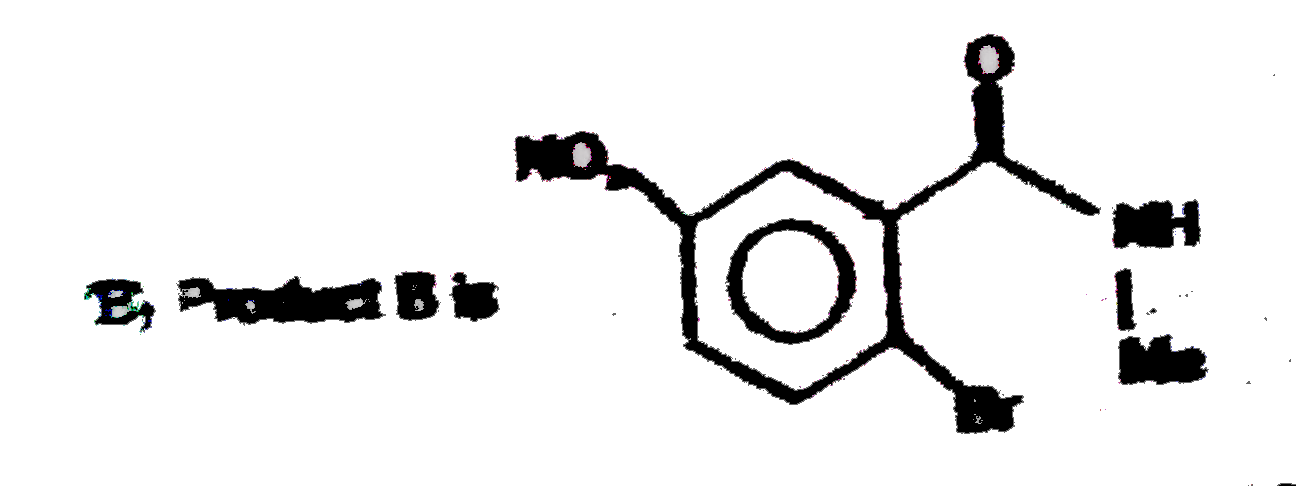Explore topic-wise InterviewSolutions in .
This section includes InterviewSolutions, each offering curated multiple-choice questions to sharpen your knowledge and support exam preparation. Choose a topic below to get started.
| 14851. |
Write the balanced chemical equation involved in the manufacture of potassium- dichromate from chromite ore. |
|
Answer» SOLUTION :`4FeCr_(2)O_(4) + gNa_2CO_3 + 7O_(2) to 8Na_2CrO_4 + 2Fe_2O_3 + 8CO_2` `2Na_2CrO_4 + 2H^(+) to Na_2Cr_2O_(7) + H_2O + 2Na^(+)` `Na_2Cr_2O_(7) + 2KCl to K_2Cr_2O_(7) + 2NaCl`. |
|
| 14852. |
When CH_(3)COCH_(3) reacts with CI_(2) and NaOH, which of the following is formed |
|
Answer» `CHCI_(3)` |
|
| 14854. |
The reagent(s) for the following conversion is/are |
|
Answer» alc. KOH |
|
| 14855. |
Which of the following complex ions is expected to absorb visible light ? [At. No. Zn = 30, Sc = 21, Ti = 22, Cr = 24] |
|
Answer» `[Ti(en)_(2)(NH_(3))_(2)]^(4+)` |
|
| 14856. |
Which of the following has most acidic hydrogen ? |
|
Answer» Hexan-3-one 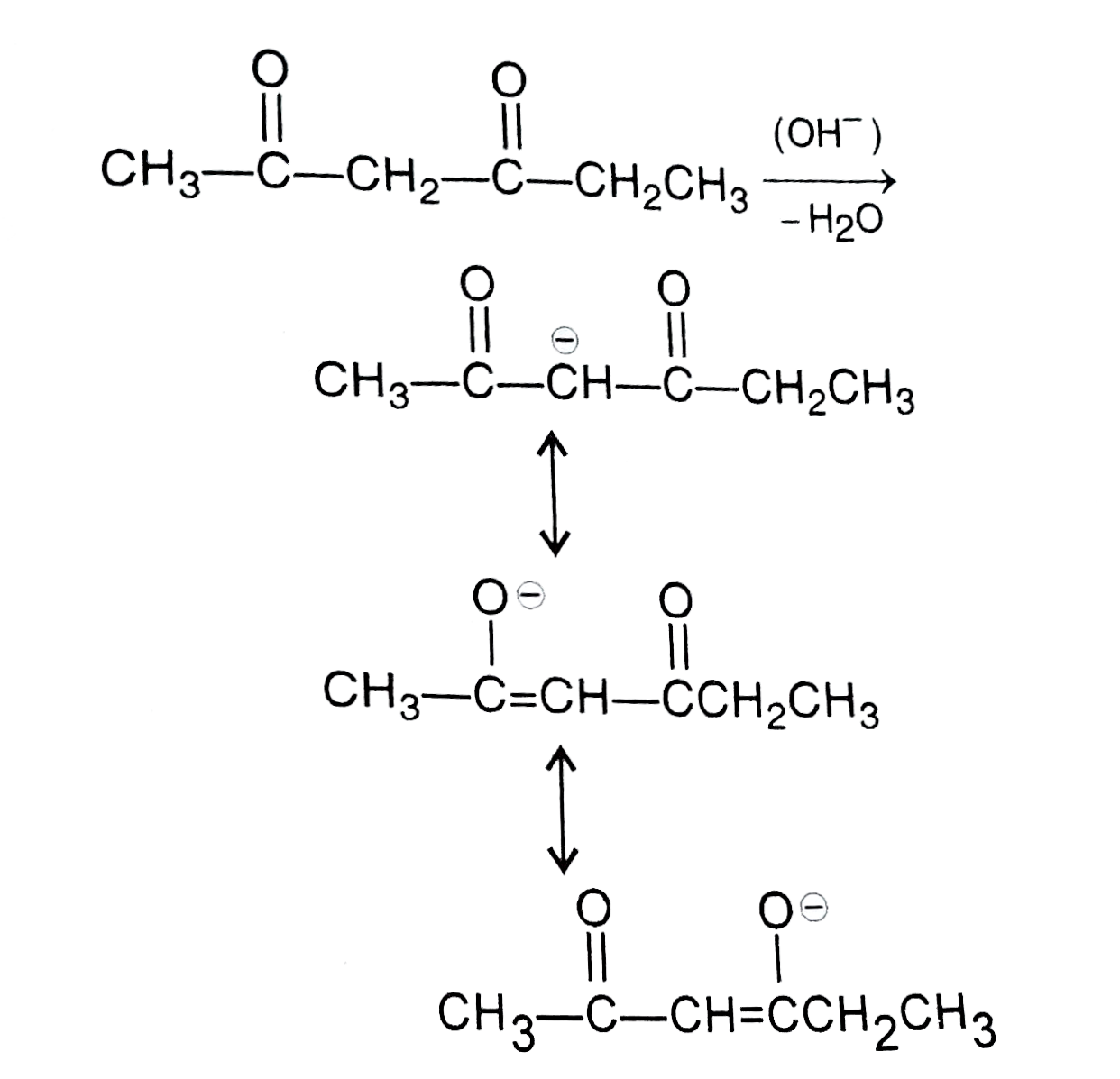
|
|
| 14857. |
What do you understand by activation of adsorbent? How is it achieved ? |
|
Answer» Solution :Adsorption capacity of adsorbent can be increased by activation of adsorbent. Adsorbent can be more activated by the following REACTION. (i) Amount of adsorption is increased by increasing surface area of adsorbent. For that adsorbent is CONVERTED into small particles or powder FORM. (ii) Adsorbent can be activated by some specific reactions too. e.g. To more activate the coal made from wood it should be heated in air at 600K to 1330K temperature. ABSORBED gases are removed by doing this and the space obtained to enter the new ADSORBATE. |
|
| 14858. |
What is the IUPAC name of the product obtained from oxidation of phenol ? |
|
Answer» 1, 4 - BENZOQUINONE |
|
| 14859. |
The solubility in water of sulphate down the Be group is Be gt Mg gt Ca gt Sr gt Ba. |
|
Answer» HIGH heat of SOLVATION for smaller ions like `Be^(2+)` |
|
| 14860. |
Which one of the following is not a colloidal solution? |
| Answer» Solution : air | |
| 14861. |
The values of van der Waals' constant 'a' for the gases O_(2). N_(2) , NH_(3) and CH_(4) are 1.360, 1.390 , 4.170 and 2.52 L^(2) atm mol^(-2) respectively . The gas which can most easily be liquified is : |
|
Answer» `O_(2)` |
|
| 14862. |
When Cu^(2+) is treated with KI, a white precipitate is formed. Explain the reaction with the help of chemical equation. |
|
Answer» Solution :Reduction of `CU^(2+)` to `Cu^(+)` takes place due to reaction with `I^(-)` ions. This is given by the EQUATION `2Cu^(2+)+41^(-)to UNDERSET("White PPT")(Cu_(2)I_(2))+I_(2)` |
|
| 14863. |
Which of the following state are correct |
|
Answer» BENZYL HALIDES are more REACTIVE than vinly and anyl halides |
|
| 14864. |
What is magnetic character of F_2 ? |
| Answer» SOLUTION :DIAMAGNETIC | |
| 14865. |
The relation between equivalent condutance and the specific conductance is given as ............. . |
| Answer» SOLUTION :`LAMBDA=(k^(x)10^(-3))/(N)` | |
| 14866. |
Yellow ppt of (a)_____ isformedwhen CoCI_(2) reactswith excess of KNO_(2) in presence of CH_(3)COOH. |
|
Answer» |
|
| 14867. |
Which of the following element has maximum electron gain enthapy(negative)?F,Cl,Br,I. |
|
Answer» F |
|
| 14868. |
When Cl_(2) gas is passed intoa mixturecontaining Br^(Θ) and I^(Θ) and CHCI_(3),I_(2) (voilet ) firstappear CHCI_(3) layer. |
|
Answer» `21^(Theta) + CI_(2) RARR 2CI^(Theta) + I_(2)` `2Hi^(Theta) + CI_(2) rarr 2CI^(Theta) + Bi_(2)` Thus `I_(2)` is FORMED in precipitate of `Bi_(2)` andgiven violetcolour in `CHCI_(2)` hencetrue |
|
| 14869. |
What is amorphous solid ? |
| Answer» Solution :In amorphous solids,the ARRANGEMENT of constituent PARTICLES has only SHORT RANGE order. | |
| 14870. |
What is the ratio of t_(1//2) to t_(1//3)for a first-order reaction? |
|
Answer» |
|
| 14871. |
Which of the following is polysulphide rubber |
|
Answer» Glyptal |
|
| 14872. |
When benzamide is treated with bromine and alkali gives compound A. Also when benzamide is reduced by LiAlH_4, compound B is formed. Find A and B. Write the equations. |
|
Answer» Solution :(i) When benzamide react with bromine and ALKALI, Hoffmann reaction TAKE place and aniline `C_6H_5NH_2` is formed as (A). `{:(C_6H_5CONH_2 overset(Br_2"/"KOH)(to)C_6H_5NH_2+CO_2),(" BenzamideAniline(A) "):}` (ii) When Benzamide is reduced by `LiAlH_4`, Benzylamine `C_6H_5CH_2NH_2` is formed as (B). `{:(C_6H_5CONH_2 UNDERSET(4[H]) overset(Br_2"/"KOH)(to)C_6H_5NH_2+H_2O),("Benzylamine(B)"):}`. |
|
| 14873. |
[X]+H_2SO_4 to [Y] a colourless gas with irritating smell. [Y]+K_2Cr_2O_7+H_2SO_4 to Green solution [X] and [Y] are : |
|
Answer» `SO_(3)^(2-)`, `SO_2` `SO_2` turns `K_2Cr_2O_7` solution in ACID medium GREEN . |
|
| 14874. |
What is the ratio of uncomplexed to complexed Zn^(2+) ion in a solution that is 10 M in NH_(3), if the stability constant of [Zn(NH_(3))_(4)]^(2+) is 3XX10^(9) ? |
|
Answer» `3.3xx10^(-9)` `IMPLIES ([Zn^(2+)])/([Zn(NH_(3))_(4)^(2+)])=3.3xx10^(-14)` |
|
| 14875. |
Which of the following is not suitable for chemisorption ? |
|
Answer» It is irreversible. |
|
| 14876. |
Which of the following does not undergo benzoin condensation? |
|
Answer» Benzene carbaldehyde |
|
| 14877. |
Which of the following alkyl halides has the maximum density ? |
|
Answer» `C_3H_7I` |
|
| 14878. |
The structure of 2-methyl-1-propanol is _________. |
|
Answer» `CH_(3)-UNDERSET(CH_(3))underset(|)CH-CH_(2)OH` |
|
| 14879. |
Vanadium pentoxide is coloured. Why? |
| Answer» Solution :Oxidation state of V in `_(2)O_(5)` is `+5`. It has do configuration, but COLOURED. The COLOUR arises due to defects in crystal structure of `V_(2)O_(5)`, is SOLID state. | |
| 14880. |
Which one of the following is used in the manufacture of tyrecards fabrics? |
| Answer» Solution :nylon 6 | |
| 14881. |
underset(hv)overset(Cl_(2))rarr A mixture of all isomers possible from the mono-chlorination the structures is subjected to fractional distillation, then how many fractions will be obtaine |
|
Answer» 2 |
|
| 14882. |
The standard oxidation potential values of A,B,C and D are -0.03 V, +0.108 V , _0.07 Vand +0.1 V respectively. This spontaneous cell reaction takes place between __________. |
|
Answer» A and B |
|
| 14883. |
Which of the following is a acetyl derivative of morphine ? |
|
Answer» HEROIN |
|
| 14884. |
Which of the following defects is also known as dislocation defect? |
|
Answer» FRENKEL DEFECT |
|
| 14885. |
Which of the following given applications of O_3 gas is not correct? |
|
Answer» It is USED as a GERMICIDE, disinfectent and for sterilising water |
|
| 14886. |
What happens when PCl_(5) is heated? |
|
Answer» SOLUTION :`PCl_(5)` has three EQUATORIAL (202 PM long) and two axial (240 pm long) bonds. Since axial bonds are weaker than equatorial bonds, therefore, when `PCl_(5)` is heated, the less stable axial bonds breaks to form `PCl_(3)`. `PCl_(5) overset("HEAT")RARR PCl_(3)+Cl_(2)`. |
|
| 14887. |
Which of the following compounds increases BOD value of water supply |
|
Answer» `CO_(2)` |
|
| 14888. |
Which one of the following is used to test ketones? |
|
Answer» IODOFORM TEST |
|
| 14889. |
Which oxidising agent used in Etard's-reaction ? |
| Answer» SOLUTION :`CrO_2Cl_2` or CHROMYL CHLORIDE | |
| 14890. |
To arrive at the molecular formula and at the structural formula the different steps involved are (a) Qualitative analysis, (b) Quantitative analysis In the qualitative analysis the different steps involved are (a) Extra element detection (b) Functional group analysis In the quantitative analysis the percentage of every element is determined and then the emperical and molecular formulae are determined. Both these are followed bystructural elucidation. Which of the following reagents can be used to identify benzene in on go? |
|
Answer» Bromine WATER test 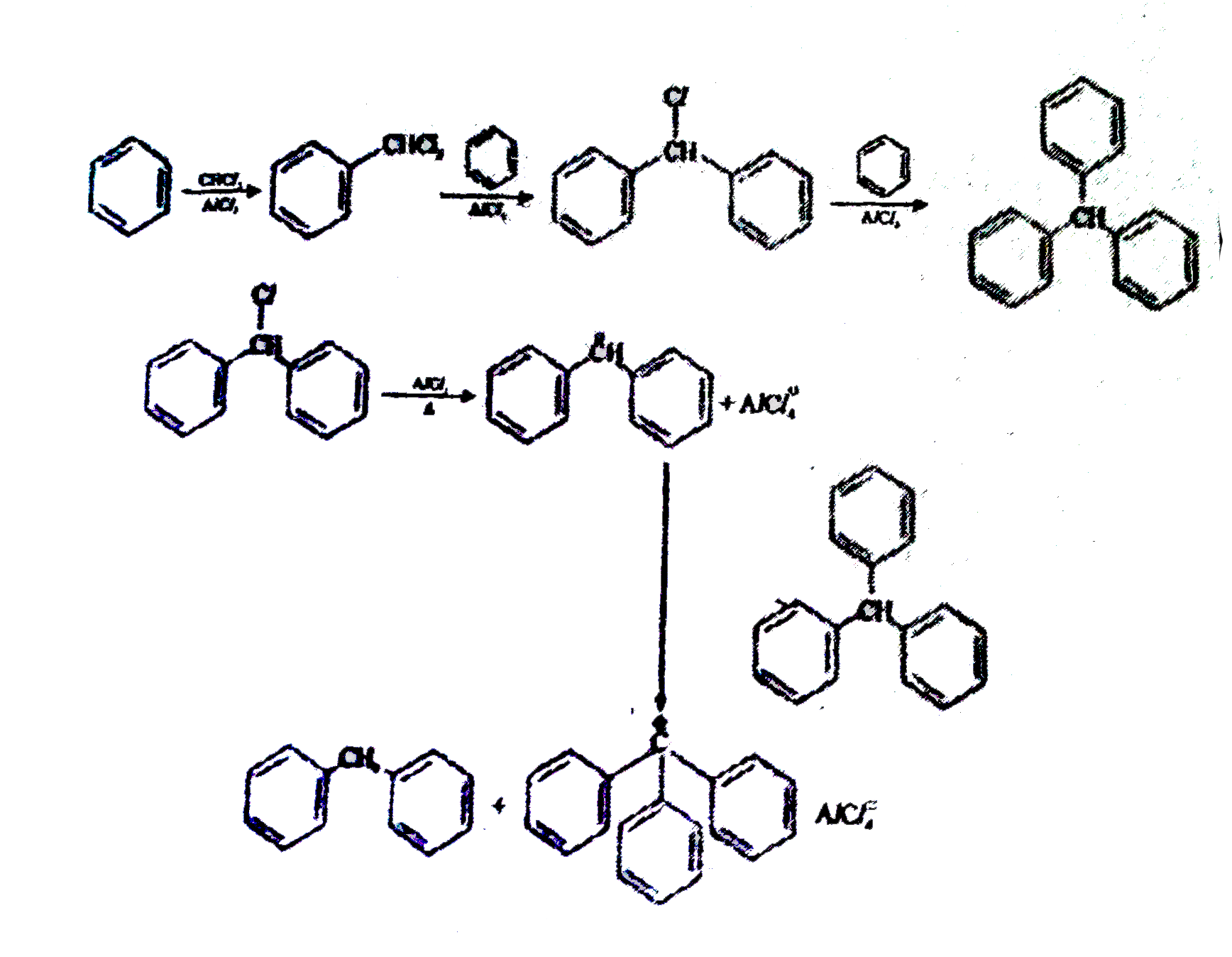 Napththalence `to` BLUE colour Anthracene `to` green colour PHenanthrene `to` purple colour Hence choice (b) is correct. (a) is incorrect. Benzene does not show `Br_(2)` water test as it does undergo addition reaction. (c) is wrong. Benzene does not show iodoform test nor any reaction with `I_(2)+NaOH` |
|
| 14891. |
Write the structures and names of the compounds formed when compound 'A' with molecular formula, C_(7)H_(8) is treated with Cl_2 in the presence of FeCl_(3). |
Answer» Solution :Compound with MF `C_(7)H_(8)` is toluene. Since `CH_(3)` group is o, p-directing, therefore, CHLORINATION of toluene with `Cl_(2)` in presence of `FeCl_(3)` GIVES a MIXTURE of o-chlorotoluene and p-chlorotoluene, in which the p-isomer predominates. 
|
|
| 14892. |
To arrive at the molecular formula and at the structural formula the different steps involved are (a) Qualitative analysis, (b) Quantitative analysis In the qualitative analysis the different steps involved are (a) Extra element detection (b) Functional group analysis In the quantitative analysis the percentage of every element is determined and then the emperical and molecular formulae are determined. Both these are followed bystructural elucidation. The number of -OH groups in a compound not containing any other functional group can be determined by |
|
Answer» `CH_(3)COCl` Or by estimating the volule of `CH_(4)` liberated after heating the compound with excess of `CH_(3)MgBr`. If one mole of organic compound gives one mole of `CH_(4)` then it CONTAINS one `OH` group. If one mole of organic compound gives `n` MOLES of `CH_(4)` then there ae `nOH` groups. The Grignard method and `CH_(3)COCl` method can be used only if `-OH` groups is present in the compound. Hence (d) is correct while (c) is wrong. |
|
| 14893. |
The reducing nature of hydrides of groupP 10 elements vary as |
|
Answer» `H_(2)Po GT H_(2)Te gt H_(2)Se gt H_(2)S TGT H_(2)O` |
|
| 14894. |
The solubility product of a sparingly soluble salt AX_(2) is 3.2 xx 10^(-11). Its solubility (in moles/litres) is |
|
Answer» `2 XX 10^(-4)` `K_(sp) = 4 x^(3), x = 3sqrt((3.2 xx 10^(-11))/(4)), x = 2 xx 10^(-4)` mole/litre |
|
| 14895. |
What is secondary structure of proteins? |
| Answer» SOLUTION :Secondary structure of proteins INVOLVES folding of polypeptide chain forming intramolecular and intermolecular HYDROGEN bonding. There are two secondary structures : `alpha`-helix and `BETA` -PLEATED structures | |
| 14896. |
To arrive at the molecular formula and at the structural formula the different steps involved are (a) Qualitative analysis, (b) Quantitative analysis In the qualitative analysis the different steps involved are (a) Extra element detection (b) Functional group analysis In the quantitative analysis the percentage of every element is determined and then the emperical and molecular formulae are determined. Both these are followed bystructural elucidation. Which of the following tests will phloroglucinol give? |
|
Answer» `NaHCO_(3)` test 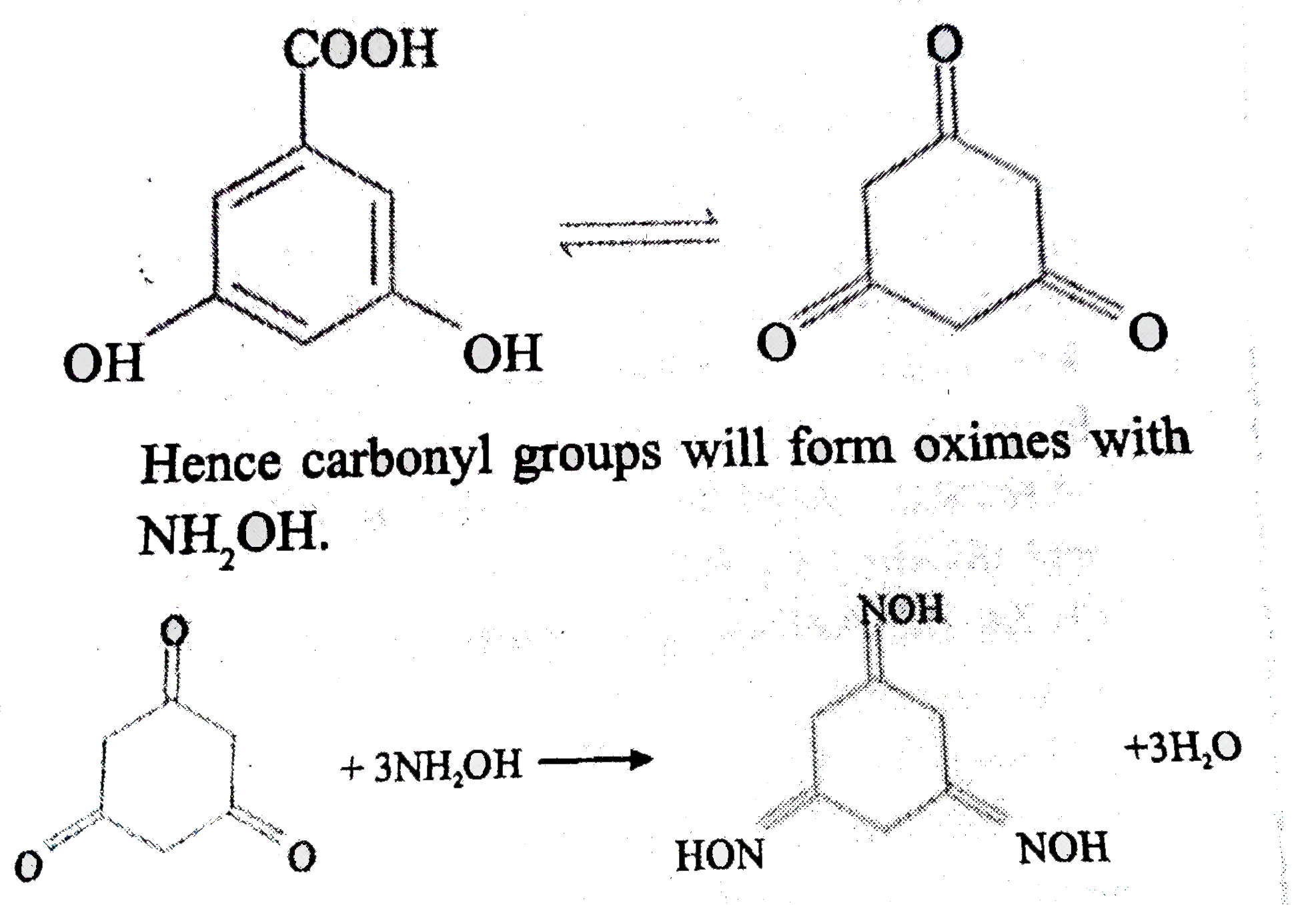 HENCE CHOICE (c) correct (a) is wrong. Phenolic groups are not that highly acidic to show sodium bicarbonic test. (b) is wrong. Though phloroglucinol has hyperconjugative `H`- atoms in the KETO form, they are onluy 2 in number so cannot form iodoform. (d) is wrong. Only allphatic `-OH` groups will show ceric ammonium nitrate test. |
|
| 14897. |
Which of the following contains acetic acid ? |
|
Answer» Vinegar |
|
| 14898. |
Which of the following is globular proteins ? |
| Answer» SOLUTION :Enzymes | |
| 14899. |
Write the name of the electrolyte used in fuel cell. |
| Answer» SOLUTION :CONCENTRATED AQUEOUS KOH solution. | |
| 14900. |
Which of the following are correct |
|
Answer»

|
|
